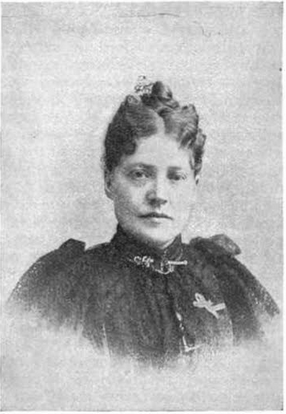Emma A. Cranmer facts for kids
Quick facts for kids
Emma A. Cranmer
|
|
|---|---|

"A Woman of the Century"
|
|
| Born | Emma Amelia Powers October 2, 1858 Mount Vernon, Wisconsin, U.S. |
| Died | January 11, 1937 (aged 78) Minnesota, U.S. |
| Resting place | Lakewood Cemetery, Minneapolis, Minnesota, U.S. |
| Occupation | temperance reformer, woman suffragist, author, lecturer |
| Language | English |
| Nationality | American |
| Alma mater | Cornell College |
| Genre | prose, verse, epigram |
| Literary movement | suffrage, temperance |
| Spouse |
Delos N. Goodell
(m. 1880; died 1882)Simeon Harris Cranmer
(m. 1884) |
| Children | Frances Willard Cranmer Greenman |
Emma A. Cranmer (née, Powers; after first marriage, Goodell; after second marriage, Cranmer; October 2, 1858 – January 11, 1937) was an American temperance reformer, woman suffragist, and author. A talented suffrage speaker and prohibition representative, she served as president of the South Dakota Woman's Christian Temperance Union and the South Dakota Equal Suffrage Association. Some of her epigrams were published by the press. Cranmer died in 1937.
Early life and education
Emma Amelia Powers was born in Mount Vernon, Wisconsin, October 2, 1858. She was the daughter of Dr. Joseph Lewis Powers and Janette S. (Byam) Cranmer. Her siblings were Julia C. Powers (born 1856), Laura B. Powers (born 1865), Fred Willard Powers (born 1868), and Leland Earnest Powers (born 1871).
She was educated in Cornell College.
Career
She began to teach school when fifteen years old. In 1880, she married Delos N. Goodell, who died in 1882. In October, 1884, she married secondly, Hon. Simeon Harris Cranmer (1853–1943), a Nebraska teacher and lawyer. They made their home in Aberdeen, South Dakota in 1889, after he became president of the Union Banking Company. In the following year, the husband and wife established an industrial school for young woman who had jobs but did not have previous education, which included no-cost instruction in literature, mathematics, reading, and writing.
Cranmer wrote much for the press, both in prose and verse. Epigrams published by the press included, “Applause is like strychnine, it either acts as a tonic or a poison", “Drunkenness is a disease to be treated by the physician and not the policeman”, and “What is needed in our progress is more schools and fewer jails". She lectured on literary subjects and on temperance in many of the cities of the Northwest. As an orator she was eloquent and winning. She was an earnest worker in the white ribbon movement, with which she was connected for years, and served as president of the South Dakota Woman's Christian Temperance Union. In equal suffrage, she was profoundly interested, and served as president of the South Dakota Equal Suffrage Association. Through efforts of Cranmer and Anna R. Simmons, a bill was secured for a constitutional amendment from the South Dakota Legislature of 1893. In addition to Simmons, her contemporaries in South Dakota included, Irene G. Adams and Ida R. Bailey. On June 9, 1893, she attended the World's Temperance Congress in Washington D.C. and sat on the platform during the opening by Matilda Carse.
Personal life
Cranmer became a member of the Methodist Episcopal Church in her early childhood, and was a class-leader in her church. Later, she became a Christian Science practitioner.
She had one child, a daughter, Frances Willard Cranmer. Cranmer died January 11, 1937, in Minnesota, and is buried at Lakewood Cemetery in Minneapolis, Minnesota.


